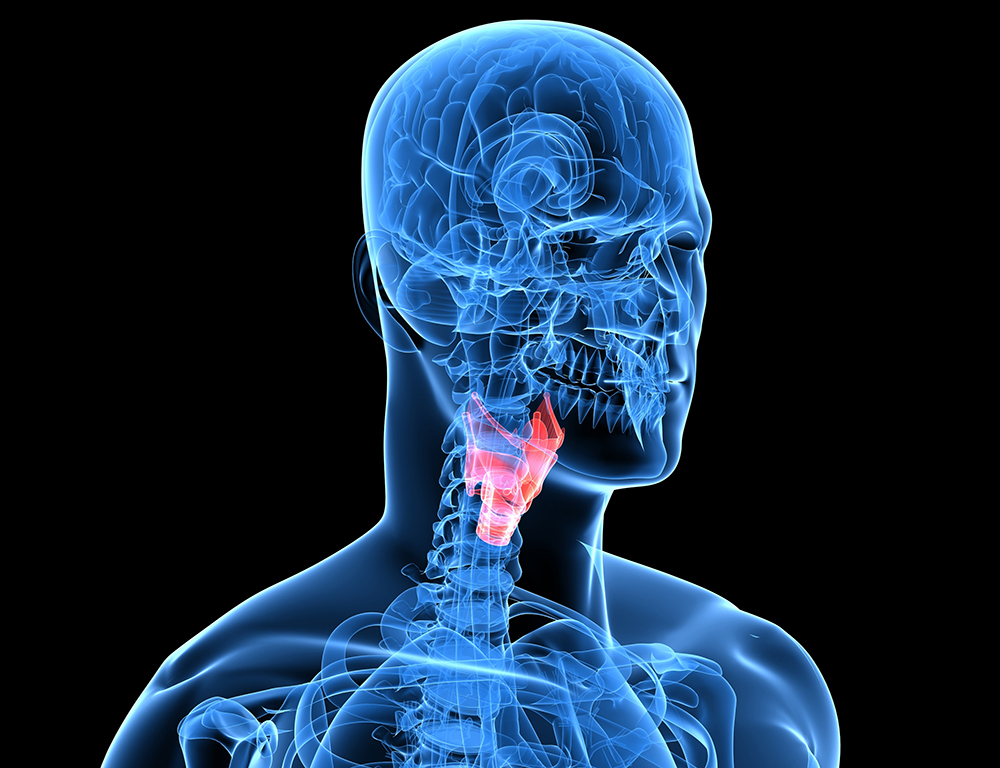The Medical Minute: Incidence of thyroid cancer on the rise

The incidence of thyroid cancer has tripled in the past three decades, yet the reason for this is not clear. Dr. David Goldenberg, chief of otolaryngology and head and neck surgery at Penn State Health Milton S. Hershey Medical Center, notes the diagnostic tools are better, but he can't get behind recent talk of overdiagnosis as the sole cause for the increase.
“The press that has been given to this is an oversimplification,” Goldenberg said. “What we should be concentrating on is not only why we are discovering more of it, but also which of these newly discovered thyroid cancers are the ones that will kill someone.”
More physical examinations, ultrasounds and CT scans mean that small nodules are easier to find, but Goldenberg said if over diagnosis were the sole issue, the rise would only be in smaller thyroid cancers.
“While there certainly has been a rise in smaller cancers, there has also been a rise in the incidence of larger tumors, which doesn't support the theory,” he said.
Thyroid cancer develops when malignant cells form in the tissues of the thyroid, a butterfly-shaped gland located at the base of the neck. The thyroid makes hormones that regulate metabolism and control things such as heart rate, blood pressure and body temperature.
Although it can be difficult to screen for thyroid cancer, symptoms can include a lump or swelling in your neck, pain in your neck going up to the ears, hoarseness that won't go away or trouble swallowing.
Thyroid cancer occurs about three times more often in women than men, but Goldenberg said the jury is still out on whether reproductive hormones play a significant role in that. Risk factors for the disease include family history, being a woman, a low-iodine diet and exposure to ionizing radiation. Some theories include obesity as a possible risk factor, as well.
Dr. Brian Saunders, an endocrine surgeon at Hershey Medical Center, said the radiation of concern is either medicinal, such as external beam radiation used to treat adult or childhood cancers, or industrial, such as the type released during a nuclear accident, rather than routine dental and chest X-rays.
Saunders said surgery to remove the thyroid is the first line of treatment. Radioactive iodine and hormone therapy may also be used. External beam radiation therapy or chemotherapy can be used in more advanced cases.
“Survival rates for thyroid cancer are very good,” he said.
Saunders recommends those with the disease seek out a health system that offers multidisciplinary, team-based care since optimal, evidence-based management involves coordination among a number of specialties including endocrinology, nuclear medicine, surgery, radiology, pathology and genetics.
A thyroid cancer support group meets the third Sunday of every month at the University Conference Center on the Medical Center campus. Meetings are facilitated by a thyroid cancer survivor and they provide an opportunity for patients and families to share their stories, meet others who are facing similar challenges and learn more about the disease.
The Medical Minute is a weekly health news feature produced by Penn State Health Milton S. Hershey Medical Center. Articles feature the expertise of faculty physicians and staff, and are designed to offer timely, relevant health information of interest to a broad audience.
If you're having trouble accessing this content, or would like it in another format, please email Penn State Health Marketing & Communications.
